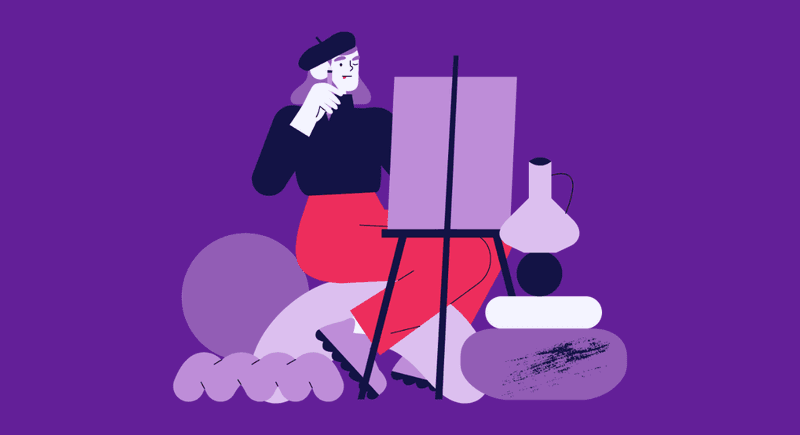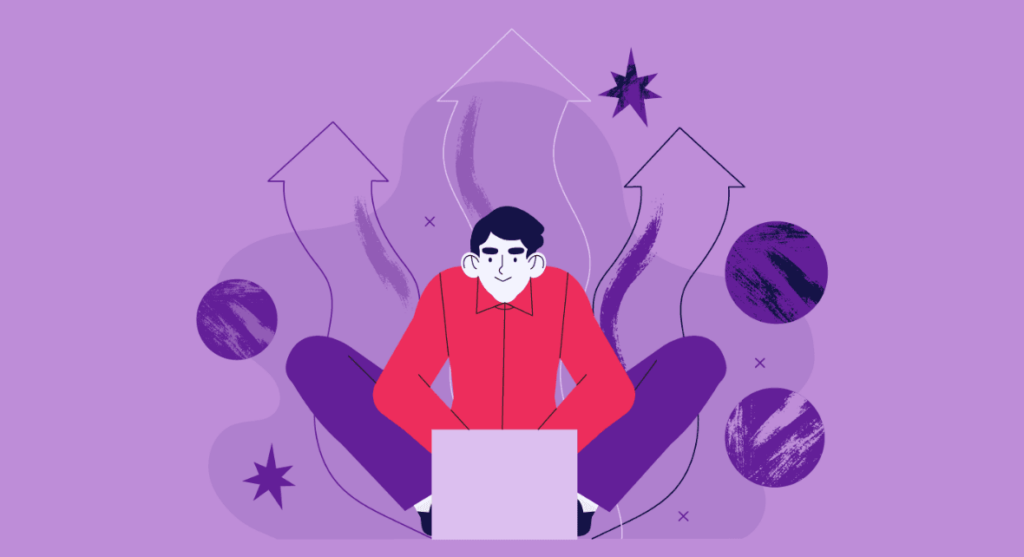You just got your first opportunity in UX Design, finally! And this is the result of a lot of study and dedication.
So it's no wonder you are excited to be able to create great products and develop UIs that will make everyone's jaw drop.
But when you start working on your first project, you realize that there are a lot of restrictions, and you can't really use your creativity.
That's when you might get frustrated and think that UX doesn't let designers be creative.
But is this true? Can you not be creative with UX Design? Let's delve further into this.
What is creativity?
Before we get into the discussion about creativity within UX Design, let's first understand what creativity is, what it is not, and how it happens in our brains.
Creativity has many concepts, some more poetic than others. Susan Weinschenk, however, likes to refer to creativity using this concept:
“Creativity is a process that results in outcomes that are original and of value.”
We can highlight 4 words from the above sentence: process, result, original, and value.
Contrary to what many people think, creativity aims to produce something that adds value to the company or individual.
What creativity is not?
There is a lot of confusion when we talk about creativity and inspiration. As mentioned above, creativity is a process, so it's possible to establish some control over it.
However, many people understand that creativity is more artistic and acts as a way of expressing oneself. However, we shouldn't mix up these concepts.
Creativity is not:
- Creating freely;
- A way to express oneself;
- Something exclusive to artists.
Many designers complain that there are too many restrictions to develop a product and that this is not good for creativity.
However, constraints can contribute to creativity because they guide the goal of the project and the user experience.
Reading Tip: Heart Framework: User-Centric Metrics To Measure User Experience
How does the creative process take place in our brains?

Although common sense says that the right side of the brain is the side of creativity, this is not entirely true. The creative process in our brain happens through several connections that involve the brain as a whole, not just one side.
Thus, creativity involves three brain connections: the Executive Attention Network, the Imagination Network, and the Salience Network.
Executive Attention Network: this happens when you are focused on solving a problem or creating something. So when you are staring at your computer, thinking about how to best design a product, you are using the Executive Attention Network.
Imagination Network: takes place in your subconscious. When this connection is initiated, it searches in your memory for solutions to solve the problem encountered by the Executive Attention Network.
Salience Network: also acts in the subconscious. Its role is to monitor the work of the Imagination Network and bring to your consciousness the solutions that can be used for your problem.
Did you notice that creativity in our brain actually works as a process?
Does UX Design hinder a Designer's creativity?
Now that we have seen what creativity is and how it happens, we can jump to the question: Does UX Design limit a Designer's creativity?
This question is present on a daily basis, perhaps for two reasons:
- There are always restrictions for the development of a product;
- We see the same layout/wireframe pattern in apps and websites.
So let's explore each of these points further.
Do the restrictions of a project limit creativity?
Remember we talked about how there is a misconception about being creative? Creativity is to express yourself and create without limitations. But the truth is that being creative is not really about that.
Being creative, especially when we talk about UX Design, is finding the best solutions for the user's problem.
And when it comes down to developing a product, you know there will be design restrictions to comply with research results, user feedback, or even the budget.
Thus, creativity is tied to how you design users' journeys, enabling the right triggers and making them reach their goals and expectations.
Those who think creativity is only linked to the artistic world and the expression of feelings are mistaken.
Being creative is designing a functional product with excellent usability, despite the various obstacles imposed.
Therefore, the restrictions of a project, contrary to popular belief, can even increase the Designer's creativity since challenges instigate their abilities to overcome challenges.
Reading Tip: How To Create Valuable User Personas That Will Actually Matter?
Do familiar layouts mean less creativity?
If you are used to online shopping, you may have noticed that most e-commerce websites have the same layout.

The main argument for this is that these layouts have proven to be the best for optimal user experience, so it's hard to avoid them.
And as a consequence of this, a designer's creativity can be constrained. But this doesn't mean UX Design has no room for creativity.
The same layouts are used for a few reasons:
- Client request;
- Lack of budget/time for further research and usability testing;
- Not conducting user research;
- Not understanding the users' needs.
It is important to emphasize the last reason in this list. There is no point in having a budget and research if we don't know how to interpret the user's needs.
Although research is important, people cannot always tell us exactly what they need. Thus, the UX Designer's role is to interpret the surveys, understand the user's real needs, and use creativity to solve them in the best possible way.
Going back to the example of e-commerce websites, it is possible to build new layouts that meet specific needs without harming their experience. You have to break this paradigm and these predetermined molds.
How to establish a creative process?
In this article, we already understood what creativity is and broke some myths that say it's not possible to be creative with UX Design.
But then, how can we practice creativity? How can we establish a process that facilitates the creative side?
To answer these questions, Susan Weinschenk describes a 4-step process:
- Understand your goal: write down exactly what you are supposed to do, all the ideas, and all the constraints you have. That way, your executive attention network will be put to work;
- Give yourself a break: taking some time away from your problem will make your imagination network work better;
- Write down all ideas and solutions: carry a notepad or make notes on your cell phone. Don't assume that good ideas come more than once, so don't rely on your memory;
- Move between the macro and the micro: alternate between the more comprehensive and detailed development during the creation process. For example: work on the detail of a button for 10 minutes, and then turn your attention to the more macro design of the product. This process stimulates creativity.
How to practice creativity
In addition to establishing a creative process, it is important to understand how to practice creativity.
Mark Baskinger lists 3 attitudes that stimulate creativity:
- Build a shared understanding of the scenario: design is a social activity. So it's important to share ideas with other team members. But don't do it randomly. Draw, write, sketch, and present the idea to others. Creating this collective understanding of the problem makes it easy to open up the discussion to new ideas and solutions;
- Ask "what if": don't be afraid to break paradigms and propose ideas in the most different ways. Always think of alternatives to the solutions already created or suggested. Asking "what if" helps you think of different answers to the same question;
- Have the courage to fail: experiment. Don't be afraid to fail. Of course, you have to understand how much you can fail because, in a project, there are significant investments. However, making mistakes is part of the process and makes you think of new solutions to that problem.
Keeping these 3 attitudes in mind will make you practice your creativity. Moreover, adding these steps to a well-established creative process will make creativity become more and more natural.
Reading Tip: Rapid Research: Answering Questions Quickly
3 simple steps to unlock creativity
The Nielsen Norman Group provided a few tips on how to get out of the blank canvas. They list 3 simple steps to get out of the creative block:
- Abstract the problem: rewrite the problem so that it becomes more comprehensive. Treat it more simply, taking it out of its original context. This way, you won't get tied up in details, leaving more room for creativity;
- Identify alternative fields: identify other fields, outside the current context, that deal with similar problems;
- Find inspiration: the last step is to find inspiration within the alternative field found in the previous step. This way, you can adapt solutions from other fields to your reality.
The example used by NN/g to illustrate these 3 steps is the development of foldable solar panels that BYU created for NASA. Watch the full video:
With this article, we hope you can see another side of UX Design; after all, you need to be creative to think outside the box. And furthermore, know that there are processes and ways to unlock your creativity to help solve problems during your projects.








